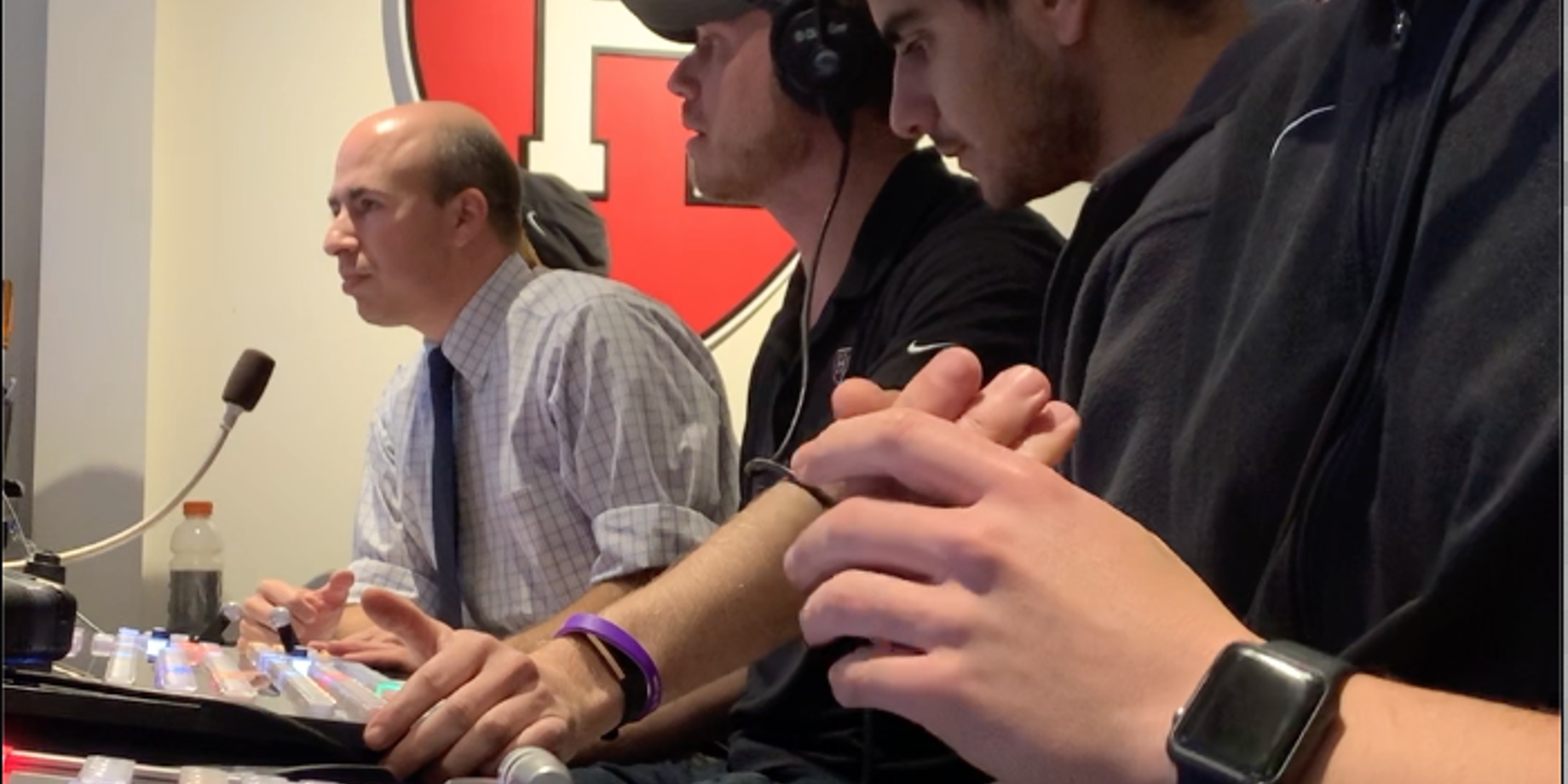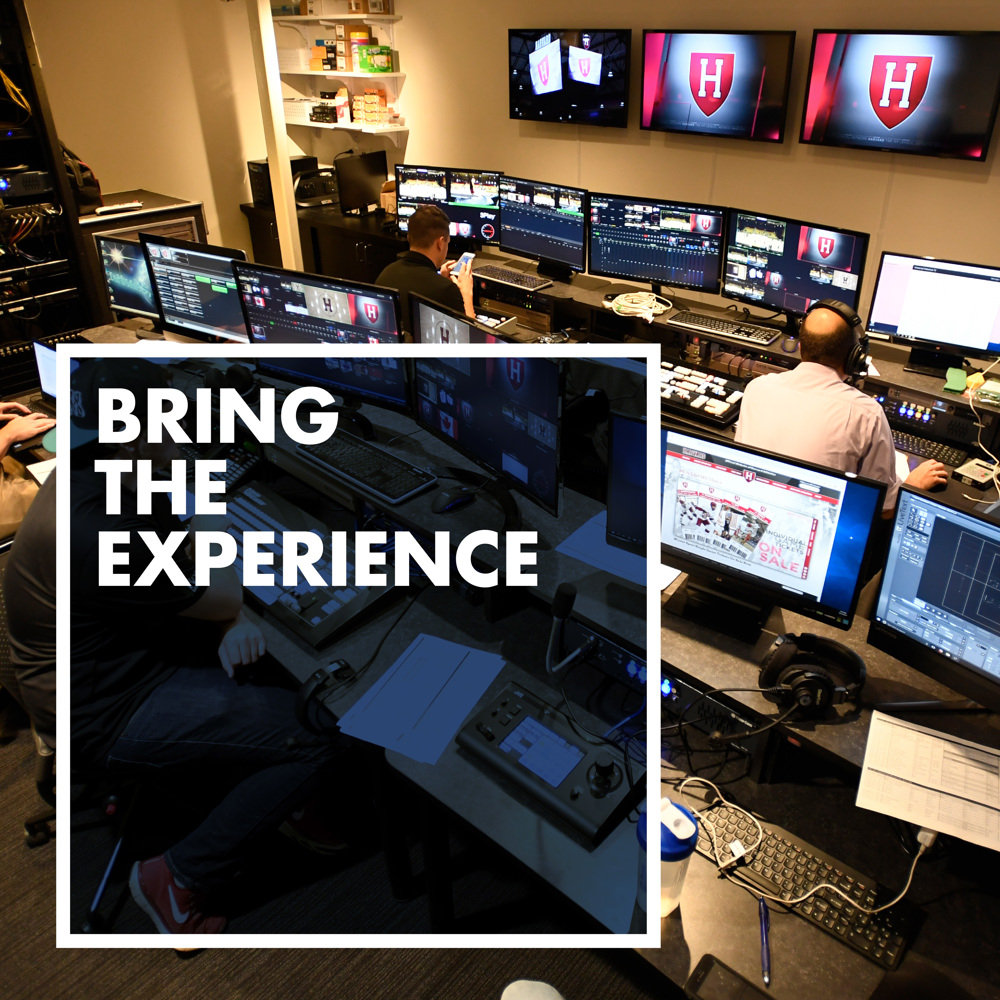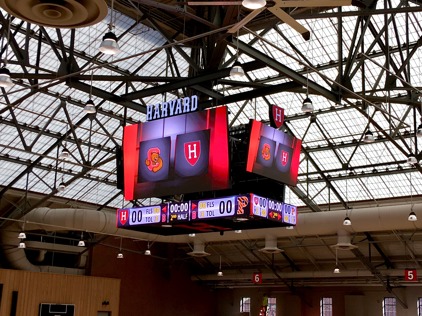From Drones to Live Book, Harvard University is Leveraging Technology for Live Event Productions
Harvard University tackles more than 300 live events per year and uses Daktronics Live Book to help with these productions.
Justin Ochsner on 5/23/2023
Categories: Pro Sports and Colleges

When it comes to live events, expectations of being able to watch no matter where you are in the world are on the climb. From high schools to colleges and universities, alumni are spread out and not always able to go to the in-person event to cheer on their team. As Harvard University found out, they can broadcast more than 300 events per year to their faithful followers.
Enter Imry Halevi, associate director of athletics, content and strategic communications at Harvard. He was tasked with bringing productions online while delivering the quality expected by their university’s brand. And to hear how he works his magic for Harvard’s productions, Justin and Matt were able sit down with Imry for an episode of The Daktronics Experience podcast.
When talking about how he and his production team brought rowing to their audiences, Imry referenced how a drone fit perfectly with the sport.

Imry Halevi
Rowing is one of our most popular sport, much more than many, many others up there with basketball and football. And not only that, but it spans the globe. We can travel. We used to be able to track where viewers were coming from, and for an average rowing race, we would get viewers on 27 different countries. And I think that speaks a lot to the kind of recruiting that Harvard and rowing coaches do.
But also, it's just a very popular sport around the world. And so, it's something that we've always prioritized. But it's not an easy sport to do go through. And even in my Northeastern days, we used to get a laptop with like a cell phone hotspot and stream the whole thing from the boat. We would be on the launch on a motorboat following the race.
I would be sitting there with a MacBook on my lap, connected to a camera with someone manning the camera at the boat. And then we would have the commentator sitting in the back with a headset and the headset plugged in straight to the camera, and then I would try to get the best internet connection I could on the boat, which was always bad, and here I go. And people would really appreciate that we would go through all that trouble.
And we've evolved over time to try to figure out the best way we can do that, not just to safeguard our equipment, but also to tell the story in a better way. And over the last four or five, six, maybe seven years, it's been for us really about the drones.
For some sports we can talk about drones, but some sports adding a drone is like a nice to have or a cool gimmick or you know it's something that we want to try. But for rowing, having the race and a look from high above really, really helped tell the story to understand what's going on there. It's really been a critical tool for us. And so over the last years, what we've been doing is we've had a drone cover the races from start to finish, two kilometers, and the drone feed is centralized in our control room.
We also have a camera on the launch following the races, and that's like low tight shots to show the athletes faces that they're working hard. We have commentators typically in a commentator booth on campus or not even out on the water, and they sit there and they see everything on the monitors, they call it, and that goes to our control room.
It's a much more comprehensive broadcast. And we can add a lot more things because it's in the control room. So, we take the drone, we take the camera on the launch, we take the commentators, we can add graphics, we can add clock, we can add a lot of really cool things. And we've actually helped out other people with drone broadcasts over the years. We've done a rowing production for championships like the Ivy League championships and the Atlantic 10 Championship, the Patriot League and other conferences as well.
And those are in New Jersey. We've been sending our crew and equipment down to New Jersey and still producing it out of our control room here. It allows us to be flexible and do picture in picture interviews during races and at the finish line cameras, all these really cool things that technology allows now and many viewers really appreciate it. And the drones have really opened up all these amazing possibilities.

The really cool thing Imry went on to explain is that this was all for one sport! There are many different things happening within the production of Harvard Athletics where Imry unleashes the full multimedia team with four full-time people and an intern, as well as their full game-day crew which is made up of 60 to 65 students and recent graduates from the local area to operate cameras, provide commentary, run replay and fill out the rest of the needs for every production.
Speaking of other production needs, we asked Imry about their broadcasts and how they manage their graphics. Here’s what he had to say about the streaming aspect.

Imry Halevi
And as we progress with our production to do more linear things – we produce a lot of linear shows every year and we've produced a lot of shows for ESPN+ – the network requirement for certain graphics and the way they animate in and the way the animate out, really precluded us from using a system that doesn't support any kind of additional functionality.
So, we were aware of Live Book when it was by AJT, which was a separate company back then. They did some demos for us. They were trying to get our business and it never actually worked out. But then when we got together in the league, the whole Ivy League, and said, “We need more consistency, we're getting together for streaming.”
We have this thing called the Ivy League Network. This was before we joined with ESPN and we want to make sure that our animation package isn't just robust, but it looks the same from school to school. We need a system that can really support that. And Live Book was such an obvious solution for us because:
- it was affordable.
- it was built for sports.
It wasn't one of those graphics systems that you kind of squeeze and stretch and make it work for sports. The whole point of it was sports at its core, but sports to insert graphics and the team at that age, back then, was really helpful in helping us create our graphics, look and feel, and it's been great and we really haven't looked back since. It's been such a big factor of how we tell the stories of our student athletes through broadcasting.


If you’ve enjoyed these two insights from Imry and Harvard’s productions, click here to listen to the full podcast episode for more stories like this, including what Imry can see on the horizon for the potential and future of game-day productions.
